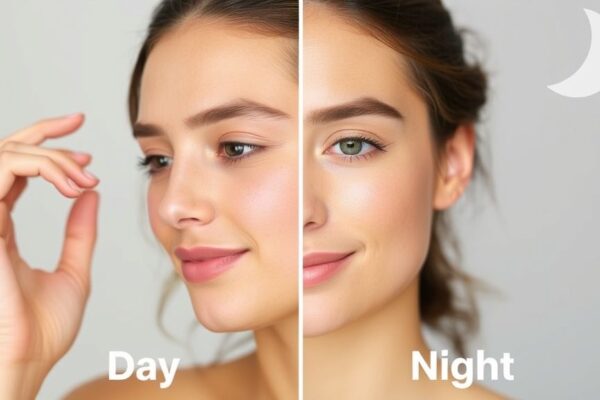If you’ve ever struggled to balance an oily T-zone with dry, flaky cheeks, you know the unique frustration of combination skin. One side feels shiny within hours of washing, while the other feels tight or dull — making it hard to choose products that won’t tip the scales in the wrong direction. That’s exactly why finding the best moisturizer for combination skin can feel overwhelming.
You don’t have to pick between battling oil and soothing dryness. The right formula can do both. Modern moisturizers are designed with oil-free hydrators like hyaluronic acid and glycerin that quench thirsty areas without clogging pores, while ingredients like niacinamide and ceramides help balance excess shine and reinforce the skin barrier.
Whether you prefer a gel moisturizer, a lightweight lotion, or a water-gel hybrid, the goal is the same: provide non-greasy hydration that adapts to the skin’s changing needs. This guide will walk you through exactly what to look for, which ingredients to avoid, and our top dermatologist-approved picks so you can finally enjoy skin that feels calm, balanced, and comfortable all day.
What is combination skin? Signs & challenges
Combination skin is one of the most common — and trickiest — skin types to manage. Unlike oily or dry skin alone, it shows up as a mix of both. Typically, the T-zone (forehead, nose, and chin) produces excess oil, while the cheeks and sometimes the jawline lean drier or even flaky. This uneven pattern makes choosing the best moisturizer for combination skin especially important, since one product has to do double duty.
The challenge lies in balance. If you reach for a cream meant for dry skin, it may feel rich on the cheeks but leave the T-zone looking greasy or congested. On the other hand, a lightweight gel moisturizer for oily skin can hydrate the forehead and nose without heaviness, but it may not fully comfort drier patches. This back-and-forth often leads people to switch products too often or skip moisturizer altogether, which can throw the skin’s barrier off even more.
Recognizing the signs — shine in some areas, tightness in others, and frequent mid-day touch-ups — helps you narrow down what works best. The solution is a non-comedogenic, oil-free moisturizer that provides enough hydration for dry areas while staying lightweight and breathable for oily zones. With the right formula, combination skin can feel balanced, smooth, and refreshed.
Why the best moisturizer for combination skin is different
When you shop for skincare, most moisturizers are labeled either “for dry skin” or “for oily skin.” But if you fall somewhere in between, those options rarely work. That’s why the best moisturizer for combination skin is in a category of its own — it’s specifically designed to deliver hydration where you need it, without overwhelming areas that are prone to oiliness.
Dry-skin creams are often rich in emollients and occlusives. While they can soothe flaky cheeks, they usually feel heavy and may clog pores in the T-zone. On the flip side, moisturizers made for oily skin tend to be ultra-light gels or mattifying formulas. These absorb quickly but may not provide enough comfort for drier patches, especially in colder weather.
The solution? Look for oil-free moisturizers that combine non-comedogenic hydration (like hyaluronic acid and glycerin) with barrier-strengthening ingredients such as ceramides and niacinamide. These hybrid formulas are lightweight enough to control shine yet nourishing enough to relieve dryness.
Texture also plays a role. A water-gel moisturizer or lightweight lotion adapts better to mixed needs than a thick cream. Some people even layer — applying gel to the T-zone and lotion to drier areas — but a well-formulated product often eliminates that extra step.
Key ingredients to look for in a moisturizer
The secret to finding the best moisturizer for combination skin lies in the ingredient list. Since this skin type swings between oiliness and dryness, the right blend of hydrators, barrier-supporters, and balancing agents makes all the difference. Here are the key players to look for:
Hyaluronic Acid
A true hero for combination skin, hyaluronic acid is a lightweight humectant that pulls water into the skin without adding grease. It hydrates dry areas while leaving the oily T-zone feeling refreshed instead of heavy. Look for gel moisturizers that feature this ingredient front and center.
Niacinamide
Also known as vitamin B3, niacinamide helps regulate sebum production and minimizes visible pores. It calms redness, strengthens the skin barrier, and works especially well in oil-free moisturizers designed for shine control.
Ceramides
Think of ceramides as the “glue” that holds skin cells together. They help repair and protect the skin’s natural barrier, which is often disrupted in combination skin. A moisturizer with ceramides locks in hydration where it’s needed most without clogging pores.
Glycerin
Like hyaluronic acid, glycerin is a humectant — but it’s especially effective at attracting and holding onto water in the skin. It provides lasting hydration across both dry and oily areas, making it an essential in the best moisturizers for combination skin.
Gentle Exfoliants (Optional)
Some lightweight creams or gels include low levels of salicylic acid. This keeps pores clear in oily zones while preventing buildup that can lead to breakouts.
When these ingredients work together, you get the perfect balance: hydration that’s oil-free, non-comedogenic, and long-lasting. Instead of fighting your skin’s dual personality, the right formula harmonizes it. That’s why the best combination skin moisturizers nearly always contain a mix of humectants, barrier repair agents, and balancing actives.
Ingredients and textures to avoid
Not all moisturizers are created equal, and if you have combination skin, the wrong formula can make your concerns worse. While hunting for the best moisturizer for combination skin, it’s just as important to know what to avoid as what to include.
First, skip products loaded with heavy oils or thick occlusive creams. Ingredients like coconut oil or mineral oil can sit on the surface, clogging pores in oily areas while leaving the skin feeling greasy. On the other hand, formulas packed with harsh alcohols or strong astringents may strip moisture from dry patches, causing tightness, flaking, and irritation.
Fragrance is another common culprit. For sensitive or combination skin, artificial fragrance can trigger redness or imbalance. Look for moisturizers labeled fragrance-free or non-comedogenic to lower the risk of breakouts.
Finally, avoid overly rich night creams unless they’re specifically formulated for combination skin. A lightweight lotion or gel moisturizer is usually the safer bet, providing hydration without tipping oily areas into shine overload.
Best moisturizer textures for combination skin
When it comes to combination skin, texture is just as important as the ingredient list. The right consistency ensures your cheeks feel nourished while your T-zone stays fresh. That’s why the best moisturizer for combination skin often comes in lightweight, adaptable textures.
Gel Moisturizers
Gel formulas are water-based, fast-absorbing, and ideal for oily zones. They deliver a refreshing dose of hydration through humectants like hyaluronic acid without leaving behind residue. If your T-zone gets shiny by midday, a gel moisturizer for oily skin is a great fit.
Lightweight Lotions
Unlike thick creams, lotions provide hydration in a fluid, breathable form. A lightweight lotion with ceramides and niacinamide offers barrier support while preventing dryness on the cheeks.
Water-Gel Hybrids
These combine the best of both worlds: the cooling feel of a gel with the comforting finish of a lotion. They’re especially popular among people looking for oil-free moisturizers that adapt to seasonal changes.
By sticking to these textures, you’ll avoid the heaviness of rich creams while still addressing dry areas. The result is balanced, non-greasy hydration — exactly what combination skin needs. Choosing the right texture is a small step that makes a big difference in how your skin looks and feels every day.
How to choose the best moisturizer for combination skin
Finding the best moisturizer for combination skin can feel overwhelming, but a little strategy makes the process much easier. Start by identifying your skin’s main concerns. Do you struggle more with excess oil and clogged pores, or with dryness and flakiness? Knowing this helps you prioritize certain ingredients.
Next, always check the label for oil-free and non-comedogenic claims. These are essential for preventing breakouts in the T-zone. If dryness is a bigger issue, look for a formula with ceramides, glycerin, or hyaluronic acid to restore hydration without heaviness.
Texture matters too. For daytime, stick with a lightweight gel or lotion moisturizer that absorbs quickly and sits well under sunscreen and makeup. At night, you can go a little richer if needed — but still avoid anything overly heavy or greasy.
Lastly, consider your environment. In hot, humid climates, a water-gel moisturizer may be ideal, while in colder seasons, a lotion with barrier-repairing ingredients can provide extra comfort.
By paying attention to ingredients, texture, and your skin’s seasonal needs, you’ll find a moisturizer that delivers balanced hydration every time. The right choice keeps oily areas under control and dry patches soothed — a win for combination skin.
Top dermatologist-recommended moisturizers for combination skin
Dermatologists often emphasize that the best moisturizer for combination skin is one that delivers balanced hydration without clogging pores. The following options are consistently recommended by skin experts and are loved by people who struggle with both oily and dry zones.
1. CeraVe PM Facial Moisturizing Lotion
Lightweight yet nourishing, this lotion is a favorite among dermatologists. It contains ceramides, niacinamide, and hyaluronic acid — a trio that restores the skin barrier, hydrates, and calms oil-prone areas. Since it’s oil-free and non-comedogenic, it works well even for acne-prone combination skin.
2. Neutrogena Hydro Boost Water Gel
This gel moisturizer is one of the most popular picks for combination skin. With a high concentration of hyaluronic acid, it delivers refreshing hydration without greasiness. The water-gel texture absorbs quickly, making it perfect for oily T-zones while still soothing drier patches.
3. La Roche-Posay Toleriane Double Repair Face Moisturizer
Formulated with prebiotic thermal water, ceramides, and niacinamide, this lotion strengthens the skin’s natural barrier. It provides lasting hydration but remains breathable, which makes it suitable for both day and night use. Dermatologists often recommend it for sensitive combination skin.
4. Clinique Dramatically Different Hydrating Jelly
Unlike traditional creams, this oil-free jelly texture is ultra-light and refreshing. It offers 24-hour hydration through glycerin and hyaluronic acid while delivering an antioxidant boost. Its clean, water-like finish makes it a go-to option for those who dislike heavy products.
5. EltaMD AM Therapy Facial Moisturizer
Known for its dermatology-grade formulas, EltaMD created this oil-free moisturizer with niacinamide, willow bark extract, and hyaluronic acid. It helps smooth skin texture, refine pores, and balance hydration, making it particularly effective for combination and sensitive skin types.
6. Paula’s Choice Clear Oil-Free Moisturizer
Designed specifically for acne-prone and oily-combination skin, this lightweight lotion includes soothing antioxidants, ceramides, and glycerin. It hydrates without shine and pairs well with exfoliating treatments or sunscreen.
Day vs. night moisturizers for combination skin
Your skin has different needs during the day and at night, which is why dermatologists often recommend using separate moisturizers. For combination skin, this distinction becomes even more important. The best moisturizer for combination skin in the morning may not be the same as the one you use before bed.
Daytime Moisturizers
During the day, your skin faces sun exposure, pollution, and stress from makeup or oil buildup. A lightweight, oil-free moisturizer with SPF is ideal. Look for gel-based or lotion textures containing hyaluronic acid or glycerin to hydrate without adding shine. Formulas with niacinamide help reduce excess oil while calming redness, making them perfect for the T-zone.
Nighttime Moisturizers
At night, your skin switches into repair mode. This is the time to replenish moisture and strengthen the skin barrier. A slightly richer lotion with ceramides, niacinamide, and antioxidants helps restore balance and support overnight recovery. If your skin leans oilier, a gel-lotion hybrid works well, while drier skin may benefit from a lotion that feels a little more nourishing without being heavy.
How to layer moisturizer with other skincare products
Even the best moisturizer for combination skin won’t work as effectively if it’s applied in the wrong order. Skincare products need to be layered strategically so each one can do its job without interference.
The general rule is to apply products from the thinnest to the thickest texture. For combination skin, here’s a simple routine:
Cleanser: Start with a gentle, sulfate-free cleanser that removes oil and dirt without stripping your skin.
Toner or essence (optional): Use a hydrating toner to prep the skin and add lightweight moisture.
Serum: Apply targeted serums — for example, a niacinamide serum to control oil or a hyaluronic acid serum for hydration.
Moisturizer: Now apply your chosen moisturizer. A gel moisturizer works well for daytime, while a lightweight lotion can be ideal for nighttime. This step locks in hydration and balances oily and dry zones.
Sunscreen (morning only): Always finish with a broad-spectrum SPF 30 or higher during the day.
By following this order, you maximize absorption and ensure your moisturizer seals in the benefits of your serums without feeling greasy. Proper layering helps you get the most from your skincare — and keeps combination skin balanced.
Common mistakes to avoid with combination skin moisturizers
Even if you’ve found the best moisturizer for combination skin, simple mistakes in how you use it can keep you from seeing results. Here are the most common slip-ups to watch out for:
Using one product year-round.
Combination skin changes with the seasons. A lightweight gel might work in summer, but winter often calls for a lotion with more barrier support.
Skipping moisturizer on oily areas.
Many people assume the T-zone doesn’t need hydration, but skipping moisturizer can actually trigger more oil production. Always apply a thin, even layer across your whole face.
Choosing overly rich or overly light formulas.
Heavy creams can clog pores, while watery gels may leave cheeks dry. The key is balance — a texture that adapts to both skin types.
Ignoring labels.
Not all moisturizers are oil-free or non-comedogenic. Always check the ingredients list to avoid pore-clogging oils or harsh alcohols.
Avoiding these mistakes ensures your moisturizer works effectively, keeping oily zones fresh and dry patches hydrated. With the right routine, combination skin can stay balanced, comfortable, and healthy.
Conclusion
Finding the best moisturizer for combination skin doesn’t have to feel like a guessing game. The key is balance — choosing a formula that hydrates dry areas while keeping oily zones fresh and shine-free. By focusing on lightweight, oil-free, and non-comedogenic products with proven ingredients like hyaluronic acid, niacinamide, glycerin, and ceramides, you can achieve healthy, comfortable skin every day.
Remember, texture matters just as much as ingredients. Gel moisturizers, lightweight lotions, or water-gel hybrids often provide the ideal balance for combination skin. And by adjusting your moisturizer for day and night, or even season to season, you’ll always be giving your skin exactly what it needs.
With the right product in your routine, combination skin can go from unpredictable to beautifully balanced. Instead of fighting between oily and dry, you’ll enjoy hydration that feels just right — no matter where your skin falls on the spectrum.
FAQs:
1. What is the best moisturizer for combination skin?
The best moisturizer for combination skin is lightweight, oil-free, and non-comedogenic. Look for ingredients like hyaluronic acid, glycerin, and ceramides that hydrate dry areas without clogging pores. Gel creams or lightweight lotions are usually the most balanced choices.
2. Should I use two different moisturizers for combination skin?
Not necessarily. A well-formulated moisturizer can often balance both oily and dry zones. However, some people prefer to use a gel moisturizer on the T-zone and a richer lotion on dry areas, especially in winter.
3. Can moisturizers make oily skin worse?
Only if you’re using the wrong type. Heavy creams or products with pore-clogging oils may increase shine and breakouts. That’s why dermatologists recommend oil-free, water-based moisturizers for combination and oily skin.
4. Do I need a separate moisturizer with SPF?
For daytime, yes — either choose a moisturizer that already includes broad-spectrum SPF 30 or higher, or apply sunscreen on top of your regular moisturizer. Sun protection is essential for all skin types, including combination skin.
5. How often should I moisturize combination skin?
Twice daily — once in the morning and once at night. Skipping moisturizer can lead to dehydration in dry areas and trigger excess oil production in oily zones.





